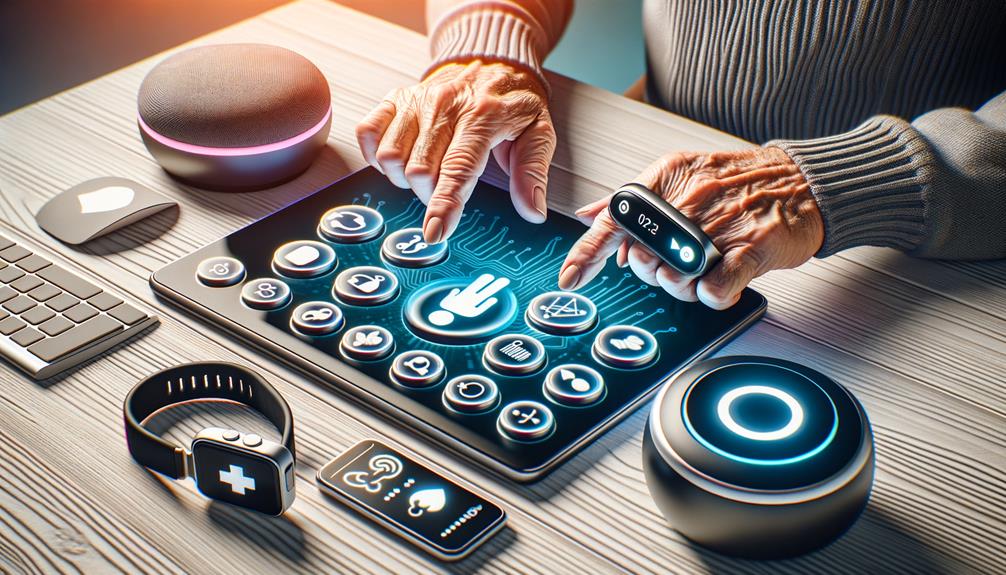Making technology accessible to seniors involves providing user-friendly gadgets that enhance their daily lives and promote independence. Simple smartphones and tablets, such as the Jitterbug Smart2 and GrandPad, offer larger displays and easy navigation. Personal emergency response systems like Lifeline provide 24/7 urgent assistance and improve safety. Smart home devices, including Amazon Echo, enable voice control of household functions. Wearable health monitors, like Fitbit, track vital signs, while user-friendly e-readers allow adjustable font sizes and glare-free screens. These solutions cater to different needs and make it easier for seniors to interact with technology.
Simplified Smartphones and Tablets
Simplified smartphones and tablets designed for seniors feature larger, clearer displays and easy-to-navigate interfaces to make digital tasks more accessible. These devices prioritize user-friendly features, ensuring that seniors can comfortably engage with technology. The Jitterbug Smart2 phone is a prime example, emphasizing simplicity and usability. Its larger screen and straightforward interface make it easier for seniors to read texts, navigate apps, and make calls without frustration.
Similarly, tablets customized for seniors, such as the GrandPad, offer a frustration-free digital experience. These tablets include features like larger text options, which enhance readability and reduce eye strain. By providing clear, intuitive interfaces, these devices empower seniors to stay connected with family and friends, access information, and enjoy entertainment options like videos and games.
In our mission to serve others, it's vital to understand the significance of these user-friendly gadgets. Smartphones and tablets designed for seniors are not just about technology; they're about enhancing the quality of life. By offering larger displays and easy-to-use interfaces, we help seniors navigate the digital world with confidence and ease, fostering independence and connectivity.
Personal Emergency Response Systems
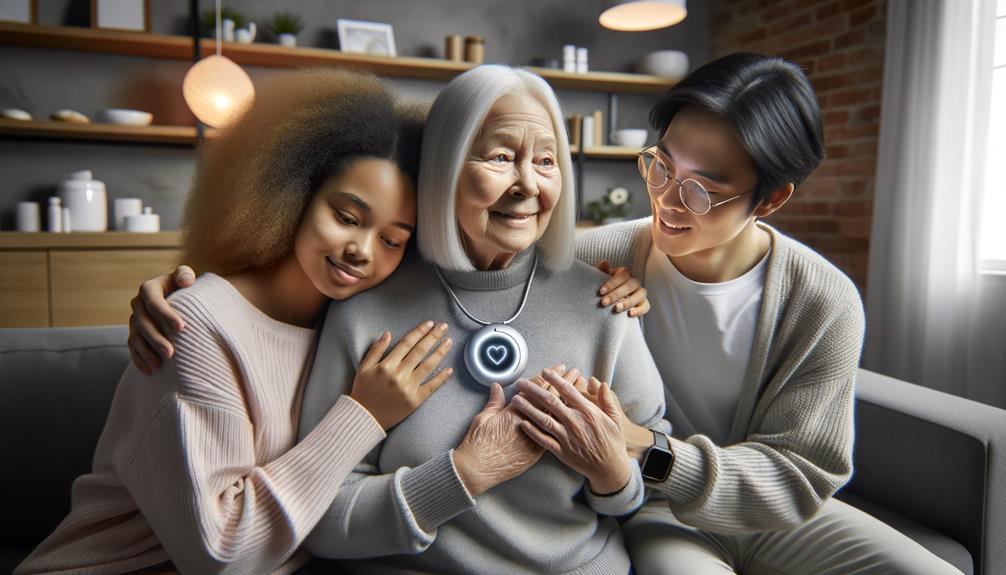
Personal Emergency Response Systems (PERS) like Lifeline and Bay Alarm Medical offer seniors 24/7 access to urgent assistance at the press of a button. These systems provide immediate help, greatly enhancing the safety and security of older adults. By wearing these devices as necklaces, bracelets, or watches, seniors can easily summon assistance in case of emergencies, such as falls or medical crises.
Technology plays a vital role in this situation. Emergency response systems provide seniors and their families with peace of mind, knowing that help is readily accessible. Rapid response times are crucial in life-threatening situations, and these systems ensure timely assistance. For seniors living alone, PERS are essential tools that support their independence while providing a safety net.
With these systems, seniors can feel more secure in their daily activities, which improves their quality of life. This also reassures caregivers and loved ones. By integrating these systems into their lives, we can support our seniors in leading safer, more autonomous lives, thanks to the benefits of modern technology.
Smart Home Devices
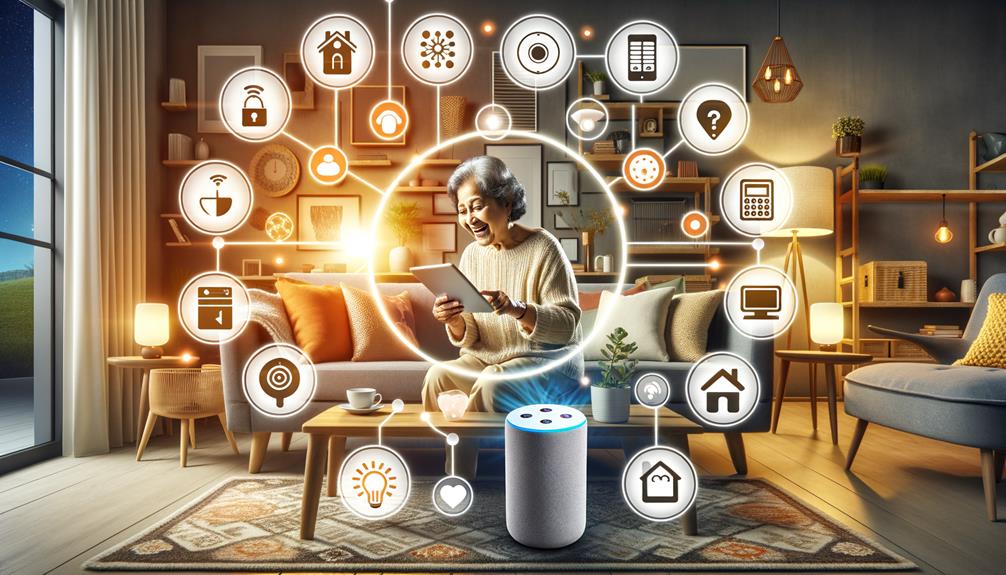
Smart home devices, such as Amazon Echo and Google Home, can greatly improve the daily lives of seniors. These devices enable older adults to control their home environment with simple voice commands, promoting independence and simplifying daily tasks. For instance, they can adjust the room temperature, turn off lights, and even set reminders for medication and appointments.
Wearable Health Monitors
Wearable health monitors, like Fitbit and Apple Watch, provide seniors with valuable insights into their vital signs and activity levels, helping them maintain their health proactively. These devices track heart rate, blood pressure, and oxygen levels in real-time, ensuring seniors can continuously monitor their health. By connecting to apps, wearable health monitors deliver health data directly to the user or their caregivers, enabling informed decisions about health and lifestyle.
While wearable health monitors aren't a substitute for regular medical check-ups, they significantly enhance health monitoring for seniors. They empower seniors to stay aware of their daily activity levels, sleep patterns, and overall well-being. Timely alerts and notifications from these devices can also help prevent potential health issues before they become serious.
| Feature | Fitbit | Apple Watch |
|---|---|---|
| Heart Rate | Continuous monitoring | Continuous monitoring |
| Blood Pressure | Not Available | Available (via apps) |
| Oxygen Levels | Available (selected models) | Available |
| Activity Tracking | Steps, Calories, Distance | Steps, Calories, Distance |
| App Integration | Fitbit App | Apple Health App |
Digital Assistants for Seniors
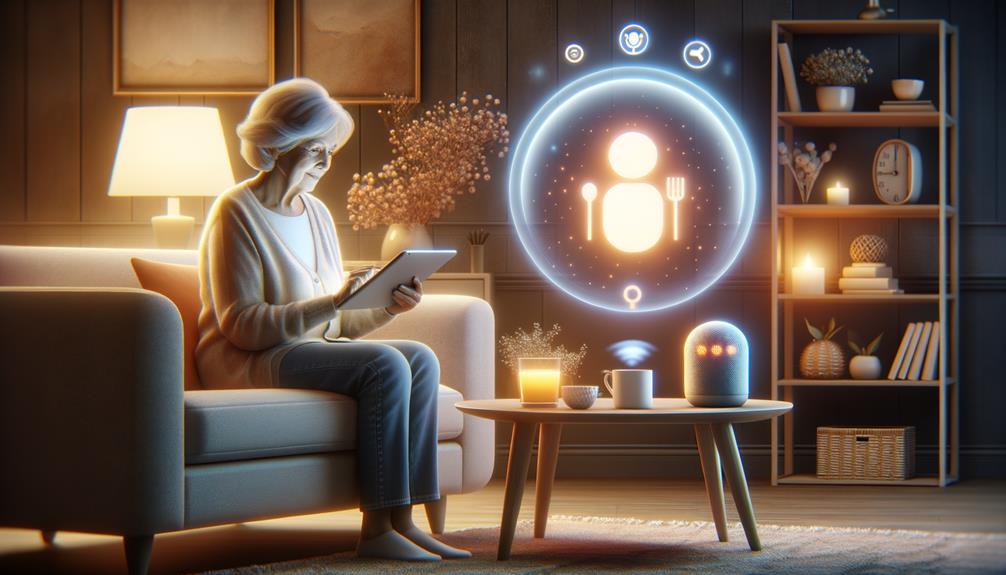
Digital assistants for seniors offer a user-friendly experience with voice command features, making it easy for them to interact with technology. These devices come with simplified interfaces, allowing seniors to perform daily tasks with ease. Some models also provide emergency assistance options, giving users and their loved ones added peace of mind.
Voice Command Features
In today's modern world, voice command features in digital assistants like Amazon Echo and Google Home have made it easy for seniors to manage their home environment and daily routines. These voice command features allow seniors to control various aspects of their home with simple verbal instructions, promoting independence and enhancing their quality of life.
For seniors, digital assistants can adjust room temperatures, play music, turn off lights, and set reminders for medication or appointments. By simplifying these daily tasks, digital assistants provide convenience and ensure that seniors can maintain a comfortable and safe living environment. This technology is particularly beneficial for those who may have mobility or dexterity issues, offering a user-friendly and accessible solution.
The hands-free nature of these devices means seniors can interact with technology without needing to physically manipulate small buttons or screens. This seamless interaction can greatly improve their overall well-being, as it reduces physical strain and the frustration that often accompanies traditional tech interfaces.
Simplified User Interfaces
Building on the convenience offered by voice command features, digital assistants like Amazon Echo and Google Home are designed with user-friendly interfaces to ensure seniors can easily navigate and interact with the technology. These devices come equipped with intuitive voice command functionalities that allow seniors to control household elements like lights and thermostats, and play music without needing to engage in complex steps.
The straightforward design of these digital assistants ensures that seniors can perform various tasks independently. With voice commands, users can set reminders, make phone calls, and access information effortlessly. This easy interaction promotes a sense of independence among seniors, making daily activities more manageable and less intimidating.
Furthermore, the instant response capability of Amazon Echo and Google Home enhances the user experience by providing prompt feedback to queries and commands. This instant interaction is vital for seniors, as it reduces the frustration that can come with delayed responses or complicated procedures.
Emergency Assistance Options
Digital assistants like Amazon Echo and Google Home offer a lifeline for seniors, enabling them to access emergency services with simple voice commands. These devices are a vital part of modern emergency response systems, allowing seniors to quickly call for help in situations like falls or accidents.
By using just a few words, seniors can get assistance in emergency situations, ensuring help is always within reach. This provides peace of mind for both seniors and their loved ones. The convenience and reliability of digital assistants make them an essential tool for seniors living alone or with limited mobility.
The technology behind these devices is designed to be user-friendly, making it easy for seniors to operate without extensive technical knowledge. This accessibility is crucial in emergency situations. Overall, integrating digital assistants into seniors' daily lives supports a comprehensive emergency response system, ensuring help is always just a voice command away.
User-Friendly E-Readers

For seniors seeking a comfortable and convenient reading experience, e-readers like the Kindle Paperwhite offer adjustable font sizes and glare-free screens that make reading easier on the eyes. These devices cater to individual health needs, particularly for those with visual impairments, by allowing users to adjust font size and brightness.
In addition to adjustable settings, e-readers come equipped with built-in dictionaries, which aid in learning new words and enhance cognitive engagement, making reading not only more enjoyable but also educational. The long battery life of e-readers also means seniors don't have to worry about frequent charging interruptions, allowing for extended, uninterrupted reading sessions.
The lightweight and portable nature of e-readers means carrying multiple books no longer poses a physical strain. This convenience is a substantial benefit for seniors who enjoy reading in various settings. With access to a vast library of e-books, including large print and audiobook options, e-readers address diverse reading preferences and needs effectively. By integrating these user-friendly e-readers, seniors can greatly improve their quality of life, promoting both mental stimulation and ease of use.
Enhancing Social Connectivity
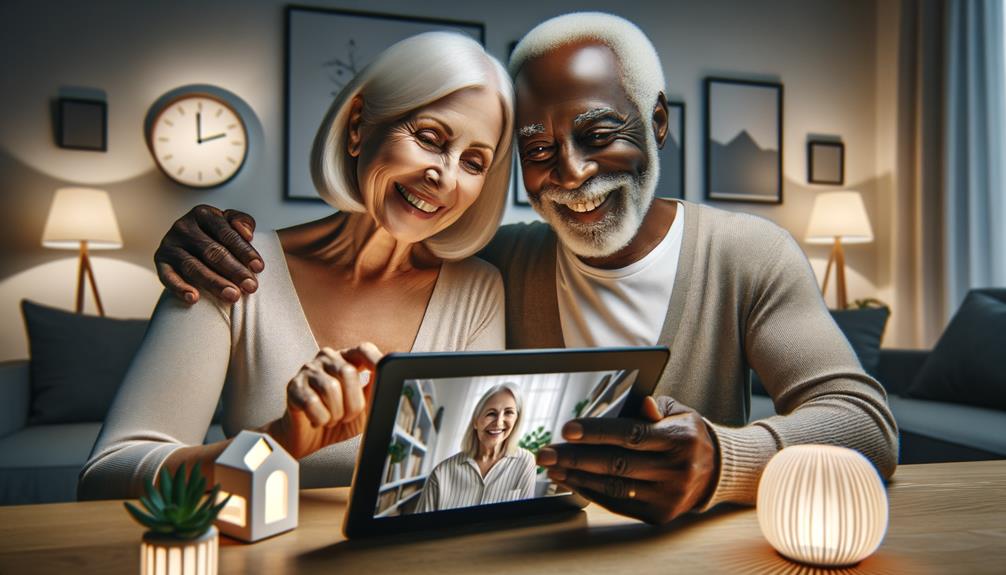
Improving social connections among seniors can greatly reduce feelings of isolation and loneliness. Technology, such as video calls, emails, and social media platforms, can facilitate connections and enhance emotional well-being. By using user-friendly technology, seniors can stay in touch with family and friends, even when physical distance is a barrier.
Video calls are an effective way to maintain close relationships. Platforms like Zoom or FaceTime allow for real-time, face-to-face interactions, which can be more emotionally fulfilling than text-based communications. Seniors can engage in meaningful conversations, celebrate milestones, and even participate in virtual activities with loved ones.
Social media platforms, such as Facebook and Instagram, also play a vital role. These platforms enable seniors to share updates, photos, and messages, fostering a sense of community and belonging. Additionally, personal emergency response systems and health monitors provide peace of mind for both seniors and their families. These devices ensure help or health information is readily accessible, adding an extra layer of security.
Frequently Asked Questions
How to Make Technology More Accessible for Seniors?
Making technology accessible to seniors can be a game-changer for their independence. To achieve this, we should focus on designing devices with larger displays, intuitive interfaces, and user-friendly manuals. By offering training sessions and ongoing support, we can empower them to navigate their devices with confidence.
What Are Examples of Assistive Technology for Older Adults?
Wearable health trackers, emergency response systems, digital magnifiers, GPS trackers, and hearing amplifiers are key examples of assistive technology that greatly enhance safety, health management, and communication for older adults. These tools can significantly improve their daily lives.
How Could We Make Accessible to Older Users?
We could make technology accessible to older users by assuming they enjoy deciphering cryptic symbols and tiny text, or we could actually simplify their tech experience with larger buttons, voice activation, adjustable fonts, and intuitive interfaces.
How to Help Seniors With Technology?
Encourage seniors to take advantage of free digital courses offered at local centers, utilize AARP resources, and explore Senior Planet Exploration Centers. Simplified devices and nationwide assistance programs can effectively enhance seniors' digital literacy and confidence.

